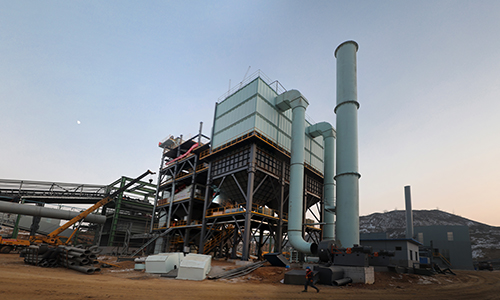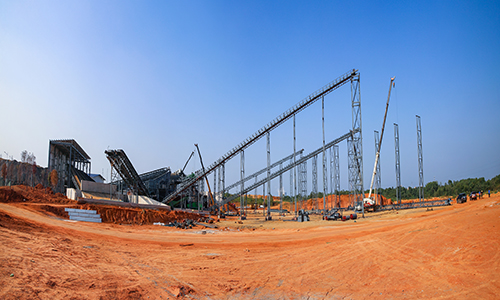اترك رسالة
An Estimate of Recoverable Heavy Oil Resources of the Orinoco
An Estimate of Recoverable Heavy Oil Resources of the Orinoco Oil Belt, Venezuela The US Geological Survey estimated a mean volume of 513 billion barrels of technically
Geology and reserve of the Orinoco heavy oil belt,
The Orinoco heavy oil belt is situated in the foreland slope region of low relief Tectonic activity is weak and several small normal faults are developed in this region
Oil sands operations as a large source of secondary
This issue is not limited to Canada, as Venezuela plans to develop its Orinoco Oil Sands recoverable reserve of ~300 billion
The Orinoco Oil Belt, Venezuela ResearchGate
The Orinoco Oil Belt of Venezuela is a very extensive, nondiscrete, crudeoil producing area located along the southern third of the Maturin (E Venezuela)

Producing ExtraHeavy Oil From the Orinoco Belt, Cerro Negro
progressing cavity pump, Horsepower Requirement, extraheavy oil, oil sand, Upstream Oil & Gas, submersible pump, bitumen, Engineering, progressive cavity
Oil Sands, a Strategic and Environmental Challenge
Oil sands ˗ or bituminous sands are a naturally occurring mixture of sand, clay, water, and extraheavy and extremely viscous oil In Canada, this oil is essentially
Unlocking the ExtraHeavy Oil of Orinoco Oil Belt,
Orinoco Oil Belt Venezuela contains billions of barrels in extraheavy crude oil and bitumen deposits, most of which are situated in the Orinoco Oil Belt The Orinoco Belt located in southeastern Venezuela is probably
Orinoco Heavy Oil and Tar Belt Assessment Unit USGS
Orinoco Heavy Oil and Tar Belt Assessment Unit of Mining Special Volume 17, p6977 Oil and Gas Journal, 1998, Orinoco–an integrated effort: Fourth

Chapter 8 InSitu Recovery of Oil from Oil Sands ScienceDirect
Viscosities are very high: approximately 1,000,000 CP in reservoir conditions for Athabasca bitumen and 100,000 CPfor Cold Lake bitumen (Fig 81)The sulfur content exceeds 35% The Orinoco tar belt (or "oil belt") consists of numerous permeable sands having a porosity between 1 2 and 38% (average 25%)The oil gravity

Venezuela’s Oil Reserves Doomed To Become The
While Venezuela’s oil sands are less viscous than those found in Canada, making them easier to extract, they are too deep for surface mining Heavy crude oil in the Orinoco Belt is extracted
Valuing Venezuela’s Orinoco Oil Belt Brutal Proof
The Orinoco Belt: “oilinplace” is estimated to be up to 14 trillion barrels, of which 70% might be extracted using the most advanced technologies “Let’s place 1 trillion barrels of oil in context Global oil consumption is currently 35 billion barrels a year Thus, the Orinoco Belt alone could satisfy 100% of global demand for

Tar Sands by Alex MacLean (22PH) — Atlas of Places
“Eighty percent of the oil sands will be developed in situ which accounts for 975 percent of the total surface area of the oil sands region in Alberta” In 2006 the Athabasca deposit was the only large oil sands reservoir in the world which was suitable for largescale surface mining,although most of this reservoir can only be produced using more

OIL SANDS Pennsylvania State University
Deposits of oil sands The largest of these deposits is in Canada The Athabasca Oil Sands (representing about 80% of Canada’s bitumen reserves) also happens to be the only one shallow enough to lend itself to surface mining, which, as we will see, is the primary method for removing oil sands

Unconventional oil resources exploitation: A review
Key words: unconventional oil, tar sands, oil shales, surface mining, extra heavy oil, Introduction The world population is over 73 billion and energy demands per one person have increased, In Orinoco oil belt in Venezuela, there are extractable reserves of about 513 billion barrels of extraheavy oil According to (geologievsbcz,

Heavy oil and tar sand World Distribution, Tar Sands, Energy
Tar sand deposits occur predominantly in the Western HemisphereNearly threequarters of the total world endowment of bitumen is estimated to occur in the Athabasca region of Alberta, CanadaAlthough some estimates place this bitumen reserve at 17 trillion barrels, only about 10 percent of the deposit is accessible by surface miningOther significant

orinoco belt surface mining oil sand
Orinoco Belt Surface Mining Oil Sand vanessabuehlerde Orinoco Belt Surface Mining Oil Sand It was the worlds first largescale commercial oil sands surface mining and refining plant and pioneered technology for bitumen extraction and upgrading When the GCOS plant began operations in 1967, bucket wheel Crushers were used to mine the oil
How Much Does It Cost To Produce 1 Barrel Of Oil From Oil Sands
Although oil sand deposits in the Venezuelan Orinoco Belt are even more Oil sands are either produced via surface mining or subsurface insitu Application on 3 Canadian oil sand

Oil sands Wikiwand
Oil sands, tar sands, crude bitumen, or bituminous sands, are a type of unconventional petroleum deposit Oil sands are either loose sands or partially consolidated sandstone containing a naturally occurring mixture of sand, clay, and water, soaked with bitumen, a dense and extremely viscous form of petroleum
Geological synthesis of the Orinoco Oil Belt, Eastern Venezuela
The Orinoco Oil Belt, considered to be the largest hydrocarbon accumulation in the world, is located on the southern border of the Eastern Venezuela basin The stratigraphic column of the area

Unconventional Oil & Gas Production IEAETSAP
Oil is extracted by surface mining or by indepth insitu mining (without physical extraction) In largest one is the Orinoco Oil Belt in Venezuela, resources of 2200 BBL and a production capacity of 570 thousand barrels per day (kb/d) [1] As for bitumen from oil sand, at the end of 2005 the estimated global resources were 3272 BBL,

Oil sands
Located in eastern Venezuela, north of the Orinoco River, the Orinoco oil belt vies with the Canadian oil sand for largest known accumulation of bitumen in the world Venezuela prefers to call its oil sands "extra heavy oil", and although the distinction is somewhat academic, the extra heavy crude oil deposit of the Orinoco Belt represent nearly 90% of
Venezuela’s oil reserves doomed to become the world’s largest
While Venezuela’s oil sands are less viscous than those found in Canada, making them easier to extract, they are too deep for surface mining Heavy crude oil in the Orinoco Belt is extracted

Tar sands Global Energy Monitor
Oil sands, tar sands or, The Orinoco Belt in Venezuela is sometimes described as oil sands, Geologist David Hughes calculated that the tar sands retrieved by surface mining has an EROI of about 5:1, and as low as 29:1 for tar sands retrieved from deeper beneath the earth

Why global environmentalists are silent on Venezuela's mining
The Orinoco Mining Belt has large reserves of coltan (a mineral coveted by the electronics industry), bauxite, diamonds and gold Roberto Mirabal, who leads the mining ministry, puts their value
Oil sands Geology Page
The Orinoco Belt in Venezuela is sometimes described as oil sands, but these deposits are nonbituminous, Surface mining The Athabasca oil sands are the only major oil sands deposits which are shallow enough to surface mine
Physical properties of oil sands In situ bulk density 21 1 + 006
Download Table Physical properties of oil sands In situ bulk density 21 1 + 006 Mg/m3, coarsegrained sands and wellsorted, finegrained sands from publication: Shear Strength of Athabasca

About: Athabasca oil sands DBpedia Association
"Eighty percent of the oil sands will be developed in situ which accounts for 975 percent of the total surface area of the oil sands region in Alberta" In 2006 the Athabasca deposit was the only large oil sands reservoir in the world which was suitable for largescale surface mining, although most of this reservoir can only be produced using more
Carabobo Field
Carabobo is one of the four fields in the Orinoco Oil Belt Located on the southern border of the East Venezuela Basin, [2] the Orinoco Oil Belt extends 375 miles along the Orinoco River in the eastern part of Venezuela [8] The East Venezuela Basin is a foreland basin south of a fold belt formed from the progressive collision of the Caribbean